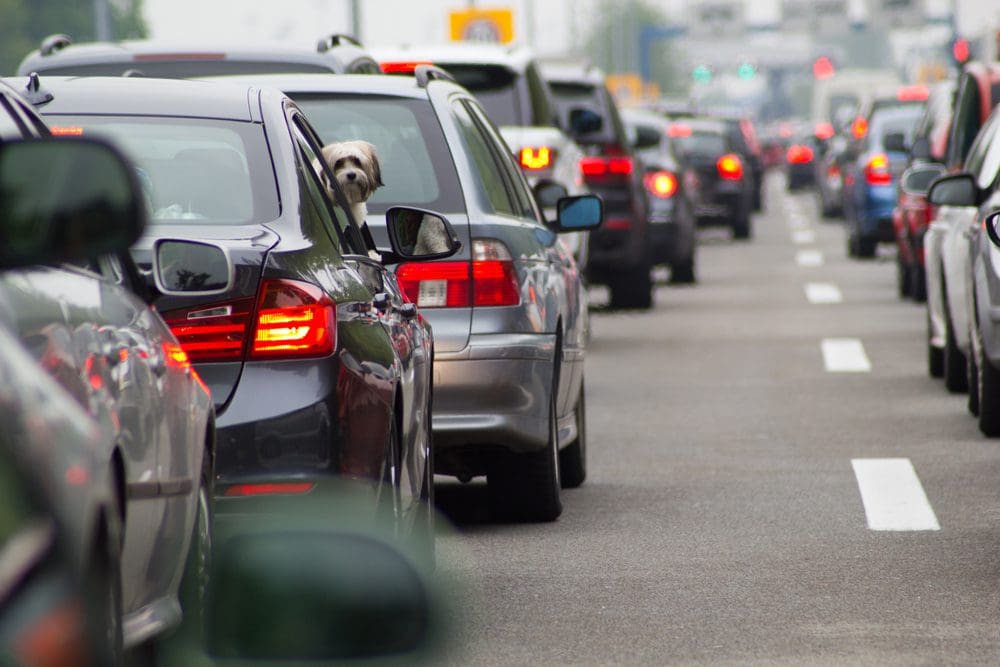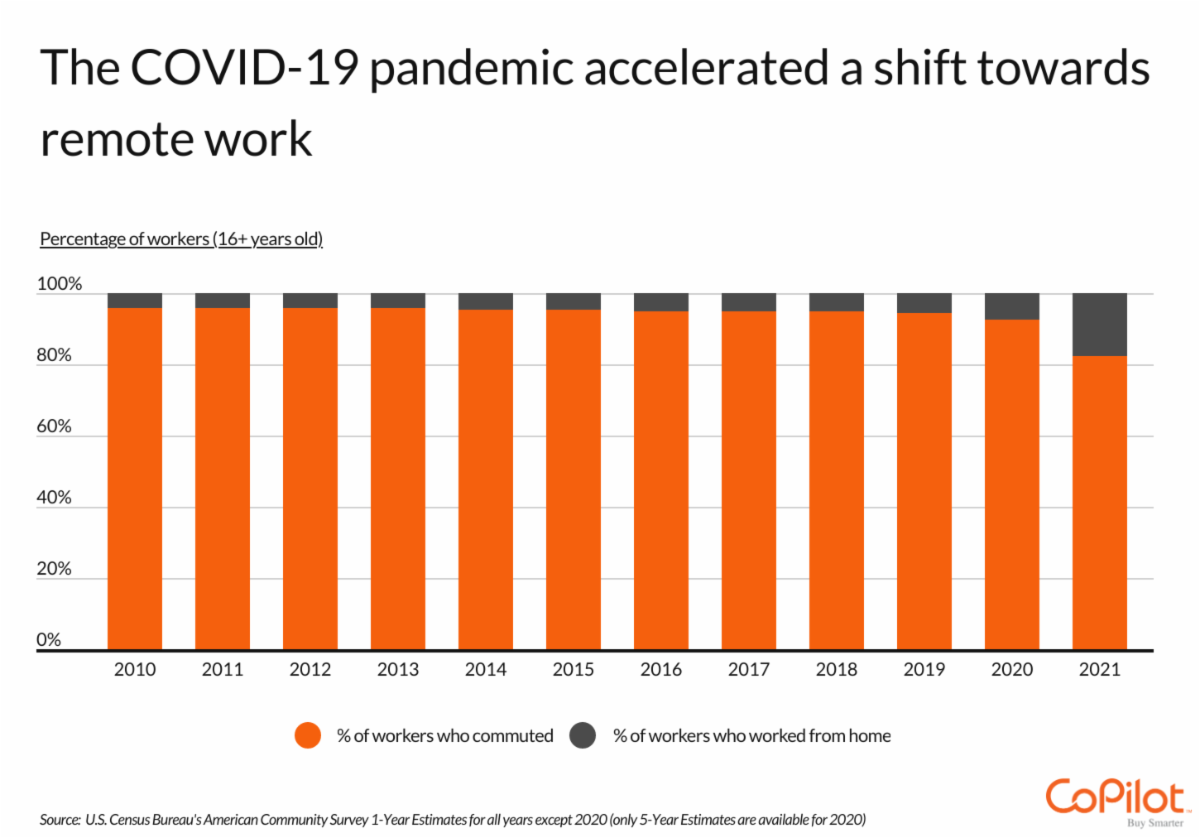
The COVID-19 pandemic brought about a huge shift in people’s daily lives, including their commutes. Suddenly, millions of people who used to commute to an office were working from home. While many companies are now requiring that their employees return to the office, there has been a lasting impact on daily commutes. Overall, commute times are less than before the pandemic, but bad traffic in some cities can cause commuters to lose days’ worth of time annually.
 |
The pandemic completely upended the employment landscape. Between 2010 and 2019, the percentage of workers who worked from home increased very gradually, from 4.3% to 5.7%. But by 2021, the share of workers who worked from home had surged to 17.9%, more than triple the pre-pandemic rate. A recent Gallup poll found that the shift towards more remote work is likely to persist—the majority of remote-capable workers (those who can do their jobs remotely from home) expect to work in a hybrid (in-person and remote) arrangement in the future.
 |
Although a much larger percentage of workers now work from home than in the past, the vast majority of workers still commute to work by driving. Two in three workers drive alone to work and another 7.8% carpool. In total, 76% of workers commute by private transportation, while less than 3% take public transportation. Another 6.5% commute by other means, such as walking, biking, or taking a taxi.
 |
As millions of workers transitioned to working from home during the pandemic, traffic conditions improved considerably. As a result, the average commute time decreased for those people who did continue commuting for the first time in recent history. After rising steadily since 2010, the average commute time dipped to 26.9 minutes in 2020 and then dropped again to 25.6 minutes in 2021. In 2019, prior to the pandemic, the average commute time was 27.6 minutes. Over the course of a year, on average, workers saved nearly 17 hours in commute time due to this decline.
Despite these improvements, workers in certain locations continue to face crippling traffic delays during certain times of the day. To determine the metropolitan areas that lose the most time in rush hour traffic, researchers at CoPilot analyzed the latest data from TomTom’s Traffic Index and the U.S. Census Bureau. Researchers ranked metros according to the extra daily commute time due to rush hour traffic. Researchers also calculated the extra morning commute time due to rush hour traffic, the extra evening commute time due to rush hour traffic, the extra annual commute time due to rush hour traffic, and the percentage of commuters that use private transportation.
Here is a summary of the data for the Baltimore-Columbia-Towson, MD metro area:
- Extra daily commute time due to rush hour traffic: +14.0 minutes
- Extra morning commute time due to rush hour traffic: +5.1 minutes
- Extra evening commute time due to rush hour traffic: +8.9 minutes
- Extra annual commute time due to rush hour traffic: +58.2 hours
- Percentage of commuters that use private transportation: 91.6%
For reference, here are the statistics for the entire United States:
- Extra daily commute time due to rush hour traffic: +14.4 minutes
- Extra morning commute time due to rush hour traffic: +5.3 minutes
- Extra evening commute time due to rush hour traffic: +9.2 minutes
- Extra annual commute time due to rush hour traffic: +60.2 hours
- Percentage of commuters that use private transportation: 92.1%
For more information, a detailed methodology, and complete results, you can find the original report on CoPilot’s website: https://www.copilotsearch.com/posts/cities-that-lose-the-most-time-in-rush-hour-traffic/











